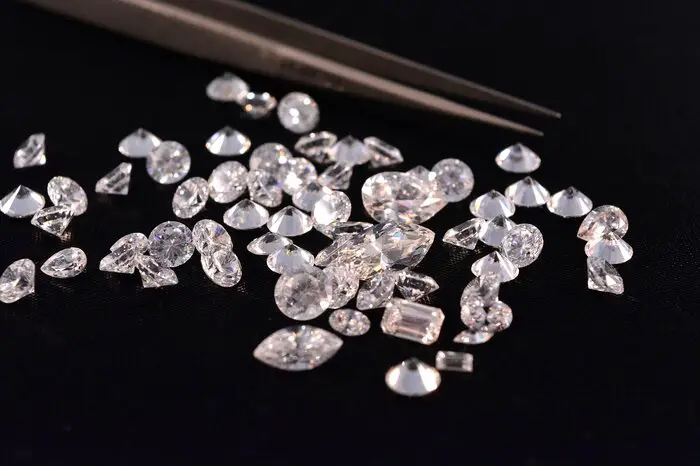Although many analysts and market observers more often emphasize the devaluation of artificial diamonds, many industry players are convinced that now is the time when business opportunities are wider than ever. Why do analytical and practical perspectives on the industry differ significantly?
Artificial diamonds have been under thorough analytical magnifying glass from the very beginning of their path as jewelry products. Analysts are trying to predict every next change while having information about certain visible development algorithms. However, the artificial diamond industry used to develop due to unpredictable algorithms just by overcoming numerous challenges and coming up with unexpected solutions.
What algorithm do analysts see today?
They call it the ‘fading of popularity’ that is caused by overflooding the jewelry market with artificial diamonds. Indeed, if compared to the times when artificial stones emerged as a more sustainable alternative to natural diamonds and there was a limited opportunity to produce many items at once, today’s industry could offer significantly bigger volumes of the product than ever. Artificial diamonds are today widely available and now they make up around 20% of the total diamond market, up from nearly zero percent in 2015.
The more products industry can offer the lower price for them can be set. Indeed, the price of artificial diamonds started to decline right in 2015 – in year, which was the starting point of their popularity. In those times the artificial diamonds were priced at around a 10% discount to a natural analog. Today, they’re priced at up to a 90% discount. During the first years, the tempos of price decline were not significant; each next year brought new pricing with a significant difference each time. Thus, during the last financial year, the lab-grown diamond market has seen a significant drop in prices, from $300 a carat in July 2022 to $78 a carat recently.
The industry continues developing in terms of increased productivity. Recently, jewelers announced about launching new fast method of growing diamonds. So, now is possible to synthesize diamonds just in 150 minutes. The process is twice as fast as it has been just a few years ago. But this is not an endpoint. In May 2024 scientists published the results of a new experiment on using a new technique to synthesize diamonds at normal, atmospheric pressure and without a starter gem. This technique could make growing the artificial diamonds in the lab even faster – just in 15 minutes.
Sure, increased production volumes alongside comparatively low demand, make analysts express some apprehensiveness regarding the industry’s future. The most widespread of them are the continuing tendency of price drop and devaluation.
Thus, Zimnisky predicts that the prices for lab-grown diamonds will continue to fall over the next year, with nearly the same price decline as they did in 2023 (about 20% according to jewelry analytics firm Tenoris). Cormac Kinney, the CEO of the commodities trading firm Diamond Standard, believes the plunge could be even steeper. He estimated that artificial diamond prices could ultimately drop another 50-80%.
What does the situation look like in the eyes of the core industry players?
Thierry Silber, CEO of the Madestones, which appreciates lab-grown stones for their innovative and challenging nature, claims that artificial diamonds are constantly reshaping the traditional view of jewelry. Indeed, from its first emergence days, this product has challenged the accustomed meanings and transformed itself in response to market challenges as well.
Shifting the focus in jewelry from status to sense full items
Before discovering the lab-grown production method, diamond jewelry was strongly associated with a luxurious way of life since only wealthy people could afford to buy natural diamonds, especially unique colorful stones of a big size. Thus, wearing diamonds meant a certain socio-economic status, and often the desire to feel themselves the “big person” fueled consumers’ demand for natural stones.
Being born sustainably, artificial diamonds became a carrier of environmental philosophy. People started to purchase them not as status items but as eloquent accessories that reflected men’s internal values.

What opportunities does this point generate for the industry?
Environmental accent fostered not only demand for artificial diamonds but also tightened up other industry segments as well. Jewelers started to use recycled gold or silver to design jewelry with artificial diamonds. Couples preferring sustainability started to demonstrate their environmental stand not only by choosing engagement rings with artificial diamonds but also by building the whole wedding concept around sustainable solutions in decorations, wedding style for themselves and guests, etc.
Transforming consumers from passive buyers into active co-creators
Natural diamonds are born by nature, and one has no chance to offer either size or color but should buy what has already grown in the Earth’s crusts. They can offer special items and tell their own unique stories through jewelry.
What opportunities does this point generate for the industry?
Demand for custom design entails demand for skilled designers as well as for new creative design methods and techniques. This fosters the development of at least two business directions – the ground for start-ups and professional self-realization of designers and; the ground for jewelers’ development and scientific research.
Reconceptualization of diamond jewelry from “just for the occasion” to “everyday” item
The affordability of artificial diamonds enabled people to purchase diamonds not only for the special day but to complement their everyday style with a diamond jewelry accessory. Artificial diamonds are now a way of self-representation and the signs of a personal brand.
What opportunities does this point generate for the industry?
To satisfy this demand the industry should offer a wide range of jewelry items. This fosters the production of many things going beyond the bridal concept only as it used to be before. Many brands started to produce bracelets and watches with artificial diamonds, cufflinks, or even decorated sports equipment.

Expanding the area of jewelry application
Artificial diamonds marry not only science and technology but also technology and art. The affordability and flexibility of this product make it possible to use it for art purposes as well. There are some representative cases when artificial diamonds are used for creating jewelry telling the story of current days. Recently, an extraordinary piece of jewelry was produced to fix the memorable sports event -the Euro 2024 soccer tournament. THE MADESTONES DIAMOND FOOTBALL embodies the spirit of the game and the pinnacle of modern craftsmanship.
What opportunities does this point generate for the industry?
Jewelry became a unique way to tell not only a personal story but also the story of the nations. It means the industry can have a special new segment, art jewelry, which was unreal to develop with costly natural diamonds.
In summary, one can see that the tendency and analytical prediction are not obligatory to become true. With artificial diamonds, each new challenge is being transformed into a new opportunity. Indeed, the market is overflooded and the demand for artificial diamonds has decreased. Yet, it does not mean the obligatory fading of the industry; it means that market players should look for fresh solutions and discover new horizons.
##




